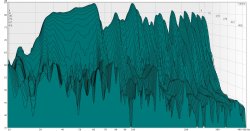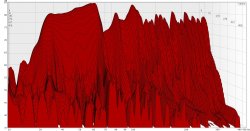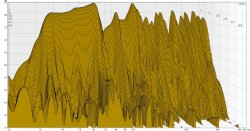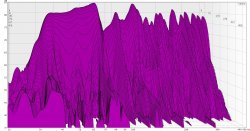PitterWaffle
Registered
Thread Starter
- Joined
- Mar 21, 2018
- Messages
- 7
I finally got around to doing a measurement with the miniDSP UMIK-1 calibrated USB mic last november. I followed the steps described in the original manufacturer's website to the letter. And this is what I got (see attached REW ".mdat" file for more details).
The mic position is exactly where my head would be when mixing.
This doesn't look that great (those periodic spikes are not what I was expecting). It almost looks like there is a spike every 500Hz or so. (room mode?)
I do have access to a fully equipped woodworking shop so I could easily build anything I need to treat this room. What I'm not sure is WHAT to do with it. Do I need diffusers? Absorbers?
Any help you could give me to interpret these results (or get better measurements) and eventually get a smoother room will be much appreciated.


The mic position is exactly where my head would be when mixing.
This doesn't look that great (those periodic spikes are not what I was expecting). It almost looks like there is a spike every 500Hz or so. (room mode?)
I do have access to a fully equipped woodworking shop so I could easily build anything I need to treat this room. What I'm not sure is WHAT to do with it. Do I need diffusers? Absorbers?
Any help you could give me to interpret these results (or get better measurements) and eventually get a smoother room will be much appreciated.

















